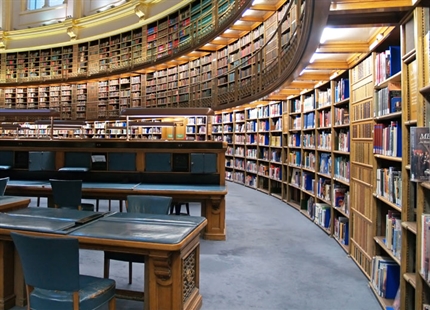18.10.2021
13 Use Cases for Proper Humidity Control
At Condair, we strive to empower everyday businesses with proper humidity control solutions. Our customers encompass a diverse, ever-expanding range of applications and subsequent use cases. As a result, we’ve learned a lot about our clients – and how to best address their indoor environmental needs. Today, in our blog entry, let’s spotlight some of the applications that benefit most from a dedicated humidity control system.
Schools
In order to learn, absorb and retain information, children need to feel comfortable, focused and healthy. Teachers share the same needs in order to accurately and effectively convey that information in an engaging, approachable manner. 40 to 60 percent relative humidity is extremely important for providing the mind with sufficient hydration so it can perform at its peak, and it’s an outright necessity for airborne infection control and reducing the spread of microbe-rich aerosols.
Hospitals
Patient health and safety take priority in hospital environments, which is why isolating viral outbreaks and keeping facility occupants safe is crucial. Regulating the relative humidity and temperature are essential steps to proactively managing such an environment. Investing in proper humidification also reduces the risk of MERS outbreaks and sick building syndrome, lowering the risk of complications to already-ill patients.
Coatings
In environments where coatings are applied to materials as part of the manufacturing process, the effectiveness and adhesion of the bonding itself needs to be kept at a minimum level of quality. This is only possible by keeping indoor air quality parameters at a minimum level as well, reducing material and product wastage. Properly humidified coating environments can see a boost to ROI, quality assurance, and overall output while driving down operating expenses.
Automotive Manufacturing
Tightly managing indoor air quality parameters – much like finetuning an engine on the assembly line in a vehicle manufacturing plant – can tremendously benefit worker wellness and efficiency in such environments. In sanding deck areas, for instance, maintaining a minimum of 55 percent relative humidity suppresses dust and reduces the risk of electrostatic discharges, sparing vehicle bodywork from excessively drawing in paint dust. Similar benefits apply to dedicated paint spraying booths (water-based paints evaporate less easily), exhaust emissions testing, and other automotive manufacturing applications. Facility humidity control is also important in these and other ways, safeguarding employees and overall quality assurance.
Agriculture
Whether growing mushrooms, fruits and vegetables, or other crops, they’re about as sensitive to environmental conditions as people – sometimes even more so. Since most produce is comprised of up to 50 percent water, maintaining balanced relative humidity protects against evaporation. A dedicated humidity controller system, such as a Condair humidifier, is also important in curbing the risk of excessive heat and moisture buildup seen with higher-than-required humidity, which can cause various crops to spoil sooner than intended. Otherwise, with egg incubation, such solutions encourage proper embryo development and a decreased airborne infection risk for chicks.
From ensuring healthy livestock to optimal growing conditions, storage, freezing, shipping, and the final sale in a local grocer – and then the meal to follow – proper temperature and humidity control are crucial in practically every conceivable agricultural application. Working with a trusted manufacturer of energy-efficient solutions to implement the right one for your needs can save time, energy, labour, and a sizeable
amount of funds in the long term.
Woodworking
Depending on the specifics of the application, required relative humidity can vary anywhere between 40 and 60 percent to ensure the best-quality woodworking results. For example, retaining sufficient moisture in kiln-dried wood requires 55 to 60 percent RH. Drier conditions absorb the moisture from the wood, making it brittle and more susceptible to cupping or warping, dimensional changes, cracking or splitting, and other irreparable complications.

Offices
Office environments are similar to call centers but equally important; with the layout and size of your office requiring a specific load capacity for humidification. You need to ensure your humidifier can handle this load efficiently to regulate indoor conditions. Office environments that have ideal temperature and relative humidity ranges, can see the same benefits of call centers along with cost savings through energy and production efficiency.
Call Centers
To remain engaged and deliver top-notch customer support, call center employees need 40 to 60 percent RH to feel comfortable sitting and talking for long periods of time. In addition, a properly humidified workspace reduces the reach of infectious aerosols, making it a little easier to stop flu and cold outbreaks before they overtake entire floors. You can expect a decline in absenteeism, improved focus, reduced irritability, and overall increased productivity.

Long-Term Care and Retirement Homes
Senior residents of these facilities are much more susceptible to infections, discomfort and complications to their health. They are particularly prone to developing issues stemming from indoor air quality, temperature and air moisture content if one or all three are insufficient. Effective, dependable ventilation and filtration are critical in long-term care and retirement homes; having a modern humidifier installed to ensure key condition parameters are set can protect residents and staff in the long run.
Data Centers
Data center humidity control is absolutely critical, as is temperature regulation. This is due to the very nature of such environments; high concentrations of heat-emitting servers, computer systems and other networking components can’t exist in overly dry conditions. Otherwise, they risk reduced operational effectiveness, an increase in maintenance costs and IT troubleshooting, and electrostatic damage. Ensuring your data center has optimal air moisture content to reduce ESD risk, can save facility managers plenty of money and headaches, not to mention lower operating costs if you go with an energy-efficient humidification system.
Warehousing
Keeping relative humidity conditions within a “safe zone” of 40 to 60 percent is important in warehousing as many products are sensitive moisture fluctuations, especially if stored for prolonged periods. If products stored in a warehouse are exposed to too little moisture or too much, it can result in product waste. In addition, keeping warehouse employees safe, healthy, comfortable and productive can ensure improved operational efficiency.

Printing
As a natural material, paper is susceptible to chemical and physical changes depending on the environment it is manufactured and stored in. It quickly dries out in low-humidity conditions, for instance. Large rolls for printing applications are typically manufactured and wrapped to be stored in environments of around 55 percent relative humidity.
When it comes to the printing process itself, the very movement and friction of paper sheets against one another can generate a buildup of electrostatic energy in conditions below 40 percent RH. This isn’t dangerous in such circumstances and is more of a potential product and/or time-wasting issue; complications from low humidity in printing include sheets sticking together, being more challenging to handle and manipulate, increased brittleness, and increased dust buildup. The right humidity controller solution also prevents issues such as curling, printer misfeeds and misregisters, overall printing quality issues including dot doubling, and creasing.
Preservation of Art, Artifacts, and Antiquities
Many priceless antiques, artifacts, and one-of-a-kind pieces of artwork only survive to this day thanks to regulated indoor conditions in which they are stored, lovingly maintained, and displayed for future generations to cherish and experience. Such applications include museums, art galleries, public record offices, libraries and other similar environments. Fragile old books, ancient woods, meticulously preserved organic materials, intricate oil paintings, and centuries-old textiles all demand highly precise air moisture content, temperature, and air cleanliness to extend their longevity.
Why Choose Condair?
These are just some of the many applications that benefit from proper humidity control. But what about the humidity controller solutions themselves? Turning to Condair means turning to dedicated professionals and engineers with decades of collective manufacturing and innovation experience. Our expertise, stretching back literal generations and passed down and refined, ensures optimal quality, energy efficiency, and suitability for a vast array of commercial and industrial applications. We even have solutions for the home!
Our range of available systems comes in various load capacities, making them ideal for everything from small mom-and-pop operations to massive industrial manufacturing and warehousing complexes. You can find reliable, dependable, and easy-to-maintain Condair systems all over the globe, a testament to their quality, cost-effectiveness for clients, and reputation for optimal performance. To learn more about Condair and our indoor humidity control solutions, contact us today. We’re happy to help!











